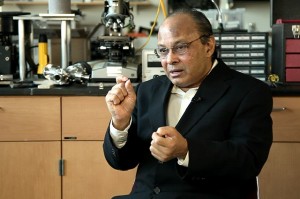The Dynamic Casimir Effect
Physicist Susanne Yelin on mirrors in a laser cavity, nano-optomechanics, and creating photons out of nothing ...
What happens when nuclear fuel in a star’s interior runs out? Is the star’s end affected by its mass? Professor of Physics at Massachusetts Institute of Technology Walter Lewin speaks on variety of possible evolutionary paths of the stars.
The energy from our sun is nuclear energy. It’s nuclear fusion: hydrogen burns to helium – nuclear fusion. Our sun, when it will have used up its hydrogen, which becomes helium, then the helium will ignite nuclear fusion and become carbon, then ultimately when the carbon has been used up the star will no longer be hot enough inside to ignite, the nuclear fusion will stop and gravity, it’s the only thing that is left, will squeeze the star, squeeze the star, squeeze the star, squeeze the core, and what is left over is an object that has the size of about the size of the Earth but it has about the same mass as our sun. That means the density of that object, which is called a white dwarf, is about a million grams per cubic centimeter, a million times denser than water. Unimaginable.
If you are near the black hole, in the vicinity of the black hole, you cannot escape anymore, because the speed that you need to escape becomes larger than the speed of light, so you are a prisoner forever. Well, you will ultimately fall towards the center, where is that point, and then that’s, of course, the end of you. But outside that point is an imaginary sphere, which we call the ‘event horizon’, which is way larger than the point and if you are inside that horizon you can never get out.
When the neutron star is formed, the ten thousand kilometer wide dwarf becomes a neutron star, the energy is so enormous that the star, it is called a supernova, radiates more energy in one second than our sun has radiated in ten billion years, so it becomes enormously bright. In the 1054 there was such a supernova explosion in our own galaxy at a distance of about six thousand light years and that star could be seen during the day for two weeks, visible during the day – that bright, six thousand light years away. So the making of a neutron star goes hand in hand with the supernova explosion. It’s an incredible explosion.

Physicist Susanne Yelin on mirrors in a laser cavity, nano-optomechanics, and creating photons out of nothing ...

Chemist David Clary on Schrodinger’s life, the significance of his equation and how his discoveries started th...

Physicist Srinivas Sridhar on super resolution imaging, an entirely new way for light to propagate, and a brea...